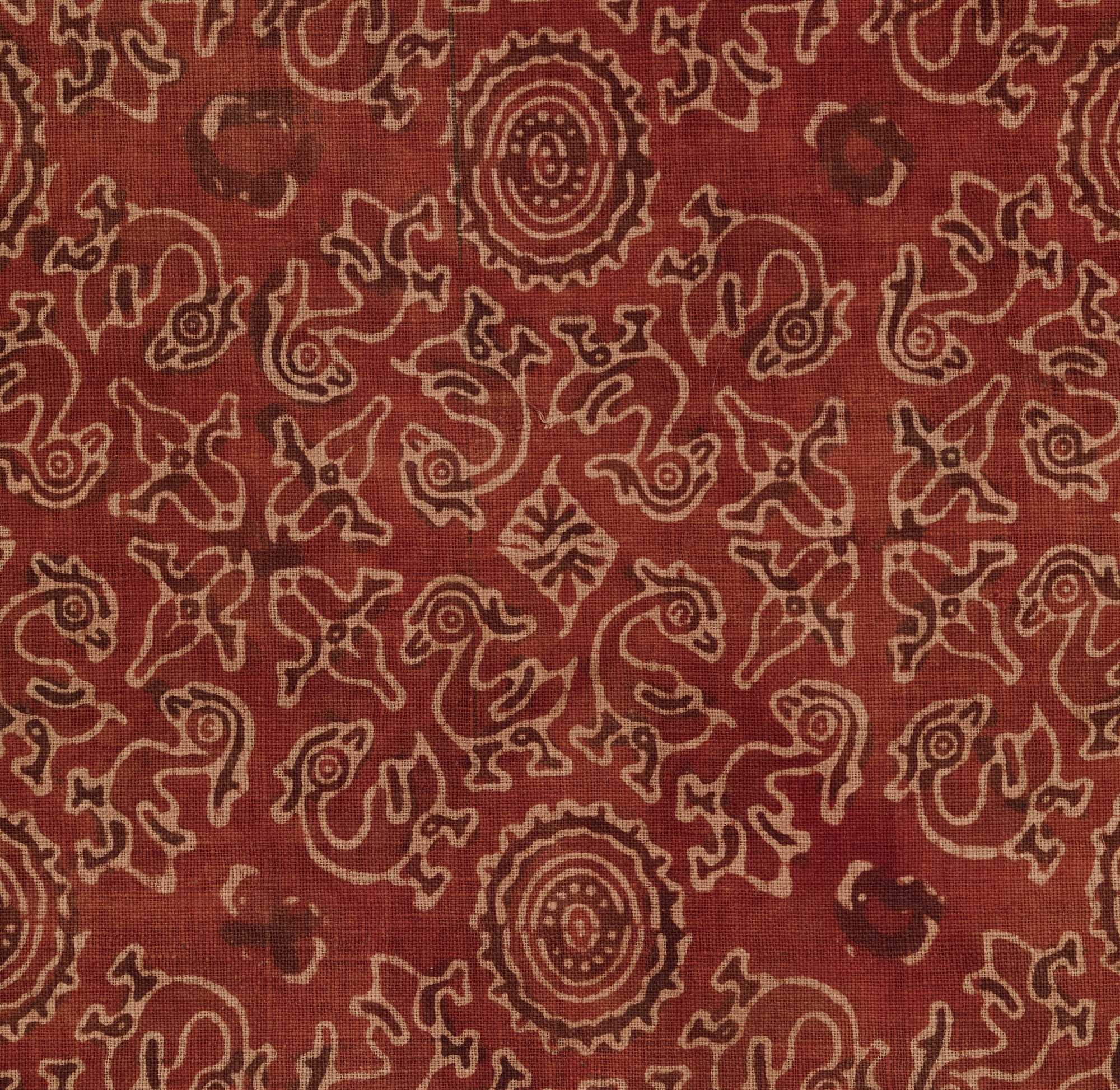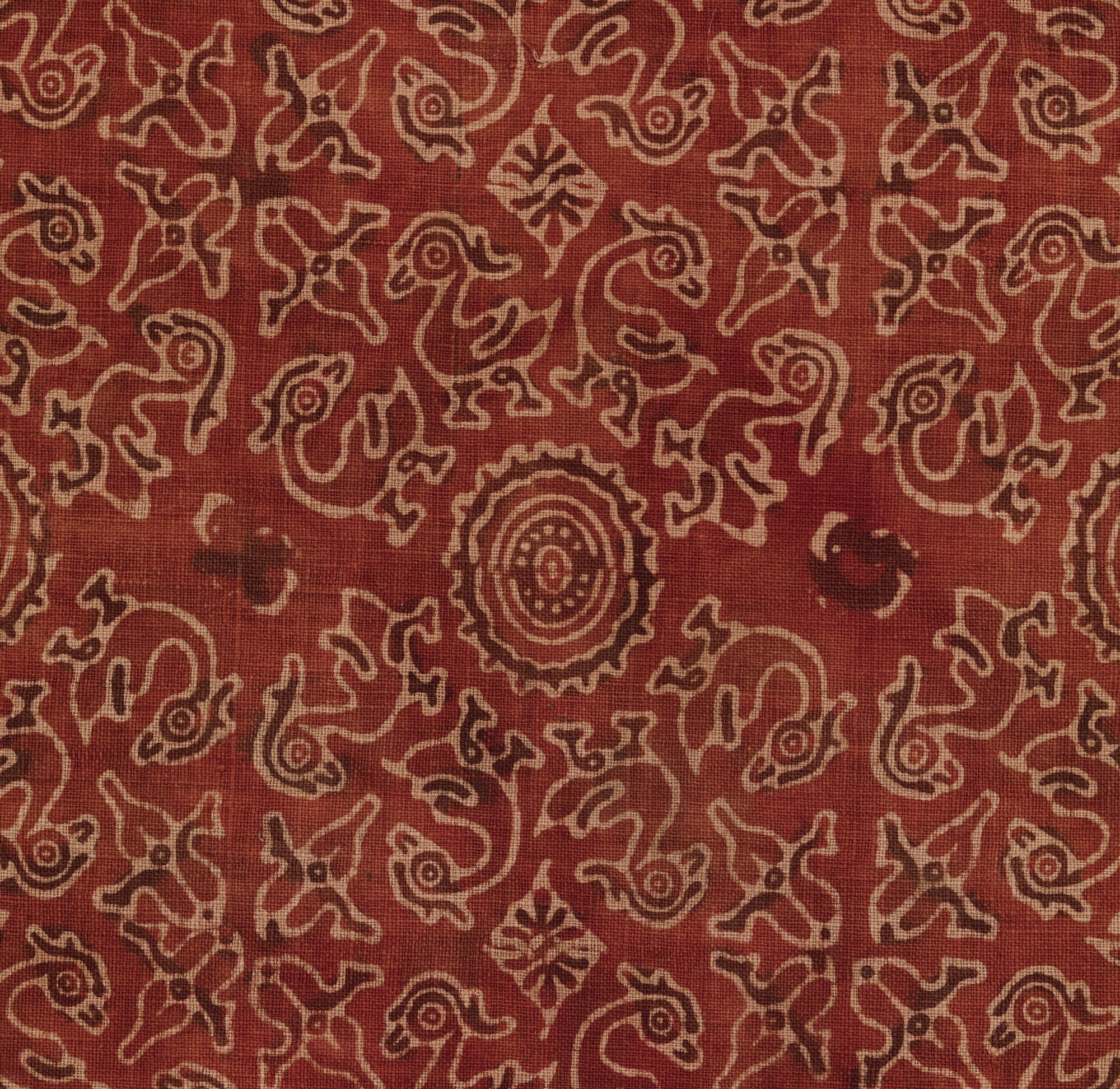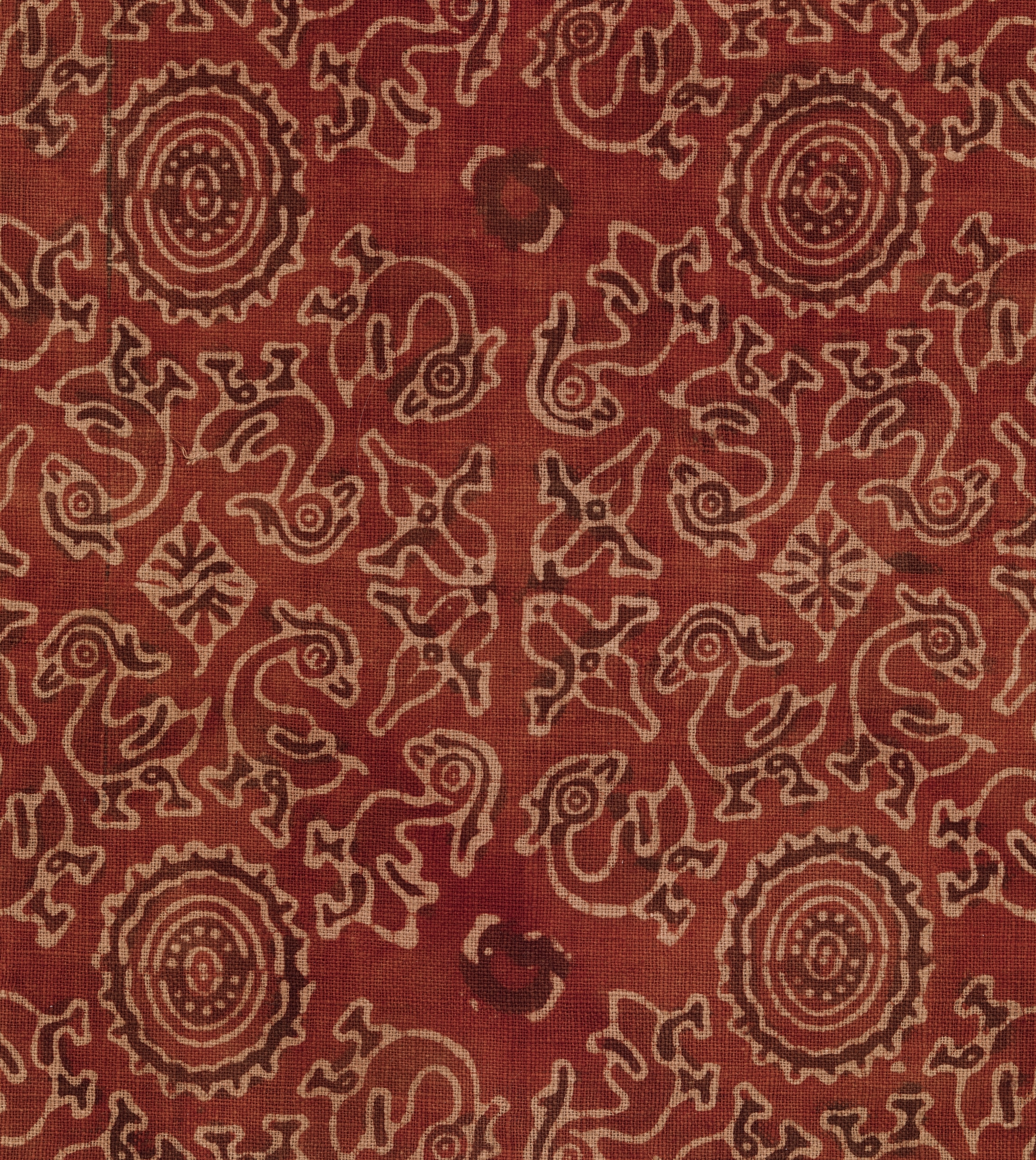Textile with Sacred Goose (Hamsa) Design
India (Gujarat, for Indonesian Market)
Not on view
This Gujarati block-printed and dyed coarse spin cotton textile with hamsa design is a typical western Indian export cloth of the medieval period. In this block-printed repeat design, eight geese (hamsa) encircle a round flower bud, and unopened buds fill the corners, intercepting others to form a four-pointed filler. The hamsa motif has been pervasive in Indian art since at least the Sunga period (3rd–1st century BC) when it most famously is depicted as a frieze decoration on the Vajrasana, the ‘Diamond-throne’ platform which marks the site of the Buddha’s enlightenment at Bodhgaya, eastern India. The pure white goose was widely evoked in Indian literature, but it is as the embodiment of the purity of the Buddha message (sometimes invoked as its messenger), as told in the Hamsa Jataka, that it secured a lasting presence in Indian iconography. The hamsa appears as a repeat pattern in a shawl worn by a princely figure in a mural in Cave 1 at Ajanta, ca. 6th century, and the contemporary playwright Kalidasa refers in his Raghuvamsa to a “silk wedding dress woven with figures of geese”, a motif which is still present in the 15th century in dress worn by royalty, as depicted in Jain Kalpasutra manuscript paintings.
Due to rights restrictions, this image cannot be enlarged, viewed at full screen, or downloaded.
This artwork is meant to be viewed from right to left. Scroll left to view more.





